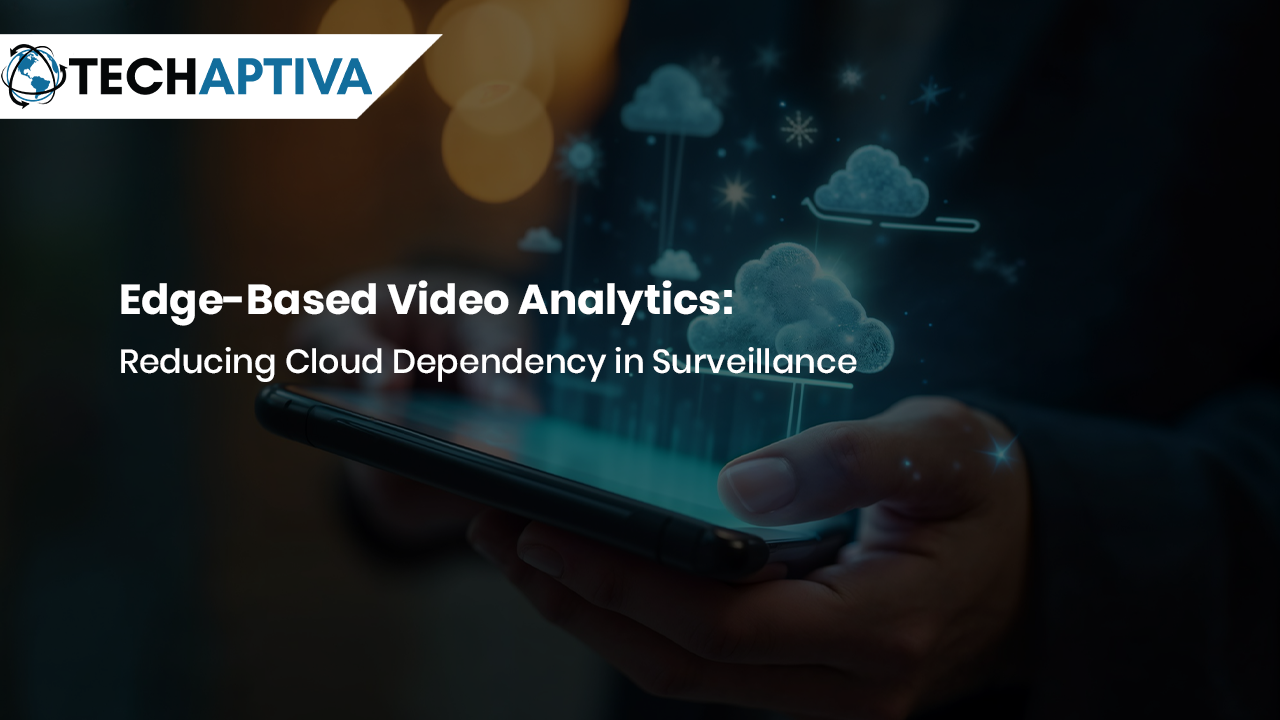Edge-Based Video Analytics: Reducing Cloud Dependency in Surveillance
What is AI CCTV?
AI CCTV is a smart security camera system that uses artificial intelligence (AI) to watch, understand, and react to what it sees — just like a human, but faster and more accurately.
Instead of only recording video like old-style cameras, AI CCTV can:
- Recognize faces, vehicles, or objects
- Send alerts when something unusual happens
- Ignore false alarms (like wind or pets moving)
- Analyze data to give useful insights
Purpose of AI CCTV
AI CCTV helps to:
- Stop crime before it happens by detecting suspicious activity
- Save time by alerting only when needed
- Reduce false alarms and focus on real threats
- Make smart decisions using data from the footage
- Improve safety in homes, offices, shops, and public places
🔄 AI CCTV vs. Normal CCTV – What’s the Difference?
| Feature | Normal CCTV | AI CCTV |
| Records video | ✅ Yes | ✅ Yes |
| Needs human watch | ✅ Yes (always) | ❌ No (AI watches it for you) |
| Sends alerts | ❌ No | ✅ Yes (for real threats only) |
| Smart detection | ❌ No (detects all movement) | ✅ Yes (detects people, cars, etc.) |
| Saves time | ❌ No (manual work) | ✅ Yes (auto search and alerts) |
Edge-Based Video Analytics: Reducing Cloud Dependency in Surveillance
At Techaptiva, we pride ourselves on providing cutting-edge CCTV surveillance solutions in Kochi, tailored to meet the evolving security needs of businesses and institutions. As part of our commitment to next-generation technology, we offer systems powered by edge-based video analytics — an innovation that’s redefining how surveillance operates in real time.
As surveillance technology advances, businesses and public sectors are looking beyond traditional CCTV systems toward smarter, faster, and more autonomous security solutions. One of the most transformative innovations in this space is edge-based video analytics — the ability to process video data directly at the source, on the camera itself or at a nearby device, rather than transmitting everything to a centralized cloud or data center.
This architecture shift brings significant advantages in performance, cost-efficiency, and data privacy. By processing data at the edge, surveillance systems can detect threats, analyze behavior, and trigger alerts in real time, with virtually no latency. For example, a smart camera at a warehouse entrance can immediately identify unauthorized access based on facial recognition or behavior pattern analysis and alert security staff within seconds — even if the internet connection is disrupted or slow. In contrast, cloud-dependent systems may face delays due to video transmission and processing time, which can be critical in high-risk environments.
Moreover, edge analytics significantly reduces bandwidth consumption and cloud storage costs. Instead of continuously streaming raw video to the cloud, edge devices transmit only relevant data or events (such as motion triggers, anomalies, or recognized faces). This not only preserves network resources but also allows for scalable deployment across multiple remote locations, making it ideal for industries like retail chains, logistics hubs, construction sites, and smart cities. Each location can operate autonomously while still contributing to a unified surveillance strategy.
Security and compliance are also key drivers of this shift. With increasing concern over data privacy laws like GDPR and India’s DPDP Act, edge analytics minimizes the exposure of sensitive footage by keeping data processing localized. Footage doesn’t need to leave the premises unless absolutely necessary, giving organizations better control over how long data is stored and who can access it.
Edge-based surveillance also supports advanced AI features that previously required powerful backend infrastructure. Cameras embedded with AI chips can now perform tasks such as object detection, license plate recognition, people counting, perimeter breach detection, and even emotional sentiment analysis. These intelligent features make surveillance systems proactive rather than reactive — they not only record but also understand and respond to situations in real time.
However, successful deployment of edge analytics depends on selecting the right hardware, ensuring compatibility with VMS (Video Management Software), and configuring it for your specific use case. Integration with access control systems, alarm protocols, and emergency responses can further enhance the value of edge analytics.
In summary, edge-based video analytics are transforming surveillance from passive observation to intelligent action, all while reducing reliance on the cloud. As AI-powered edge devices become more affordable and accessible, adopting this technology is not just a trend — it’s a forward-looking investment in smarter, faster, and more secure surveillance infrastructure.


